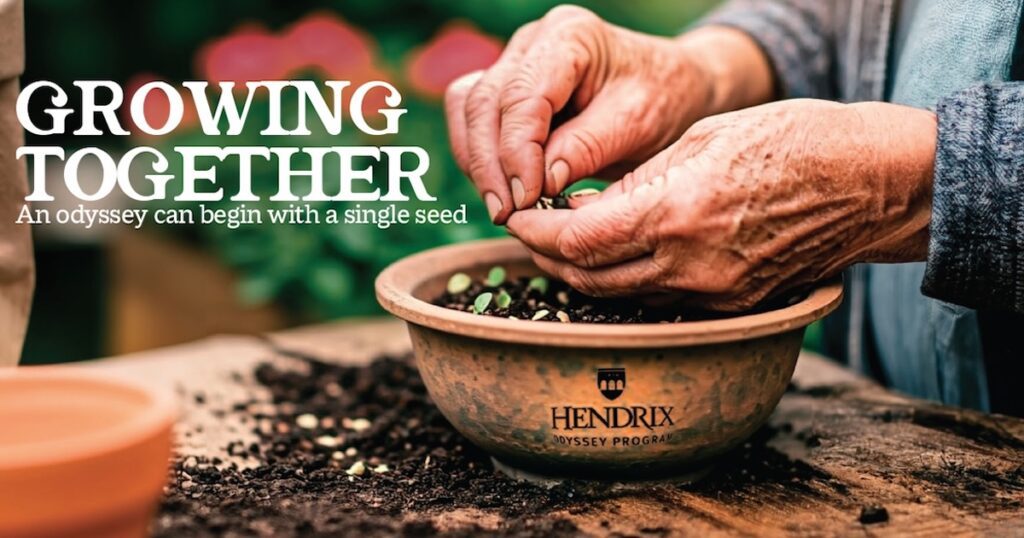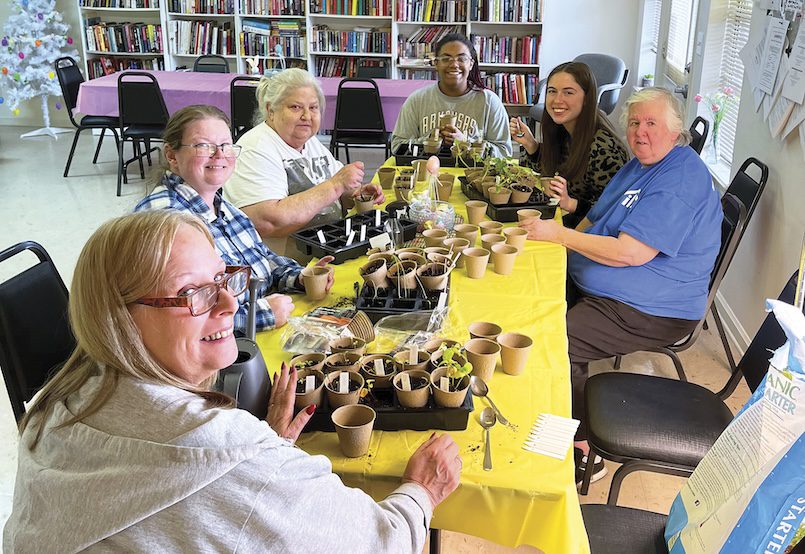01 Mar 2025 Hendrix program shows an entire odyssey can begin with a single seed
The Hendrix College Odyssey Program is all about engaged learning: finding out more about something that brings out your natural curiosity and seeing where it leads. One Hendrix College duo has found so much meaning in their project that they have continued helping with it after earning their credit.
Juniors Adia Stone and Kailey Thurman were inspired to take over the Odyssey project “Growing Happiness Through Gardening with Low-Income Older Adults,” which had been supervised by Noura Musallam, a 2022 graduate who was a senior running the project when the two were first-year students. The project was initiated by Dr. Anne Goldberg and Dr. Jennifer Peszka with funding from UAMS, inspired by their work with residents of Blue Zones around the world. Dozens of Hendrix students have received Service to the World Odyssey credit through the program over the last four years.

“We know that this program has had a positive impact on both seniors in our local community and on Hendrix students. I’ve been especially impressed with Adia and Kailey as they have moved from being participants to taking responsibility for every aspect of the program – from recruiting to meeting with the managers of senior living communities,” Goldberg said.
“It began with a grant from the Arkansas Geriatric Education Collaborative as a way to combat loneliness in senior living facilities,” Thurman said. “The idea is to pair up a Hendrix student with a resident at a senior living facility. Through weekly meetings, the pair get to know one another and start planting a garden. They start planting seeds indoors and move them outside later in the spring. The outdoor garden beds are raised so that they are more accessible to people with mobility issues.”
The students mention initial challenges they faced when filling the silence between their gardening tasks. When initially planting the seeds and then transporting them outdoors, they found that there was lots of time to talk about things outside of gardening. As more time went on, connecting with their “buddies” became a larger focus of the project. Often, they found they had more in common with the older adults than they thought and were able to facilitate meaningful communication.
“I feel that gardening breaks down the barriers between us,” Stone said. “I will never forget helping my buddy freshman year, who was mostly blind and deaf, plant his first seeds in the spring. We learned how to communicate with each other over the next few months, and by the end of the project, I was able to help him move his hand over the soil and feel his ‘pretty flowers’ he had been excited about for months. We planted bright yellow marigolds so he could appreciate his work with what little vision he had left. The older adults we worked with had a lot of wisdom to share, so gardening together felt like we got just as much out of the experience as they did.”

Both Stone and Thurman believe that the relationships started during this project flourish right alongside the garden as it is planted and grows throughout the year.
“Older adults are just that, older adults. Once you turn a certain age you don’t suddenly begin to like stereotypical older adult things,” Thurman said. “People enjoy the things that they enjoyed whenever they were young, though it may be more difficult for them to do those things now. I discovered that I enjoy many of the same hobbies that my buddy enjoys.”
Toward the end of the project, participants have a final planting and reflection on the work done throughout the year.
“The last spring planting day where we get to move our seedlings outdoors before we leave for the summer always melts my heart, and then I feel like I need to do the project again and again,” Stone said.








